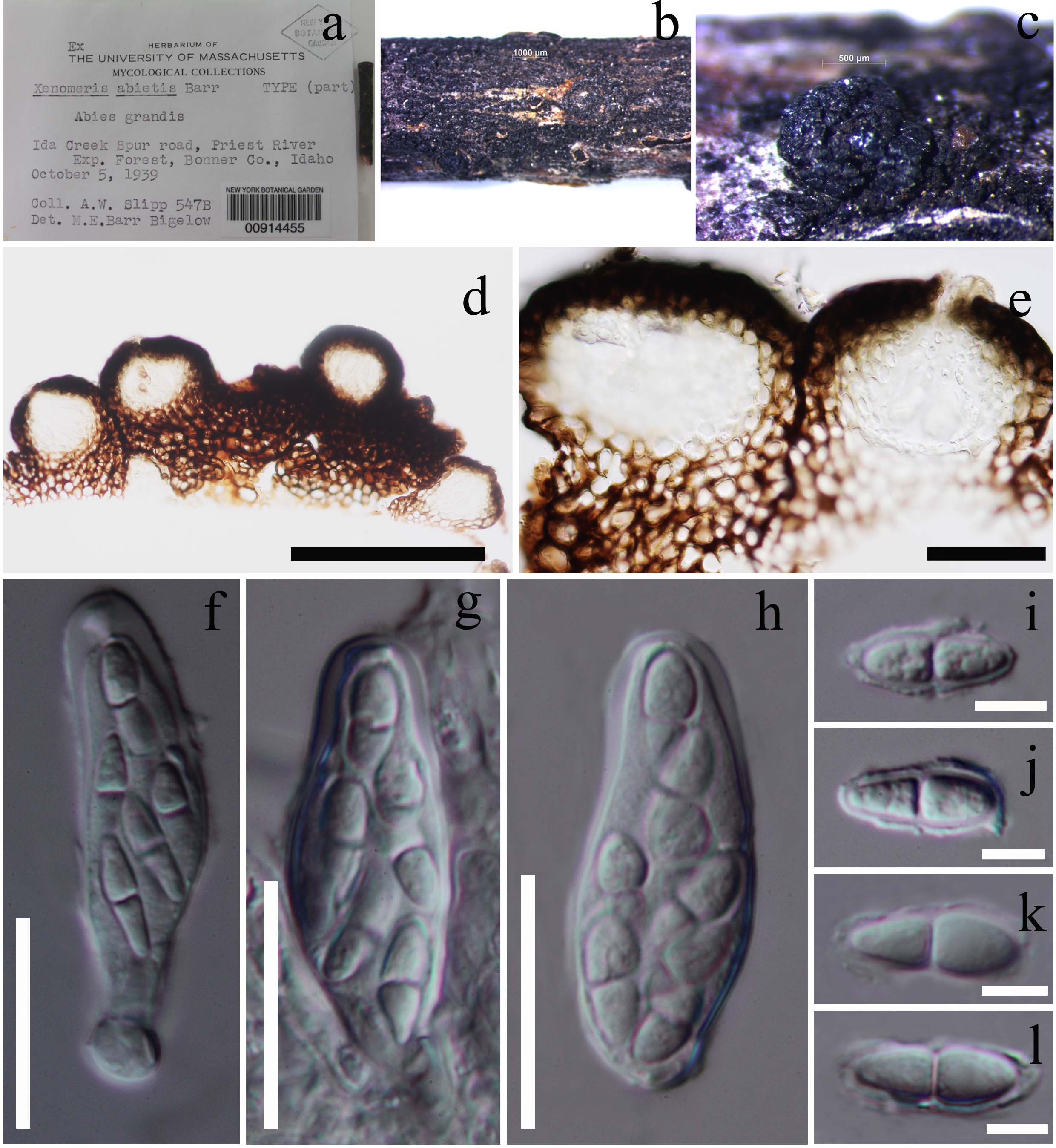Plowrightia abietis (M.E. Barr) M.E. Barr [as ‘Plowrighthia’], Sydowia 41: 32 (1989).
≡ Xenomeris abietis M.E. Barr, Can. J. Bot. 46: 842 (1968)
Index Fungorum number: IF 125592; MycoBank number: MB 125592; Facesoffungi number: FoF 00090
Saprobic on twigs in terrestrial habitatas. Sexual state: Ascostromata 400-800 µm wide black, superficial, solitary, globose to subglobose, multiloculate cells of ascostromata composed of several layers of dark brown cells of textura angularis. Locules 40−50 µm × 32−40 µm (x̄ = 44 × 37 µm, n = 5), globose to subglobose, non-ostiolate. Peridium of locules 8−12 µm wide, comprising dark brown to lightly pigmented cells of textura angularis. Pseudoparaphyses not observed. Asci 35−45 µm × 11.7−13 µm (x̄ = 39 × 12.4 µm, n = 15), 8-spored, bitunicate, broadly cylindrical, obovoid, short pedicellate and rounded at the apex with an ocular chamber. Ascospores 10−13.5 µm × 3.5−5.5 µm (x̄ = 11.8 × 4.3 µm, n = 20), uni to biseriate, partially overlapping, hyaline, 1-septate, with the upper cell slightly broader than the lower one, rounded end at both apices, constricted at the septa, oblong to obovoid, smooth-walled. Asexual state: Unknown.
Material examined − USA, Idaho, Ida Creek Spur Road, on twigs of Abies grandis (Douglas ex D. Don) Lindley (Pinaceae), 5 October 1939, A.W. Slipp (NY00914455, holotype).
Notes − Sequence data of a putative strain of Plowrightia abietis (ATCC 24339) clustered in the Phaeocryptopus clade with Rhizosphaera species (R. kalkhoffii and R. oudemansii). This species should therefore probably be synonymised under Rhizosphaera or Phaeocryptopus, but we refrain from doing so until a sequence can be linked with morphology.
Fig. 1 Plowrightia abietis (NY00914455, holotype) a Herbarium material b, c Ascostromata on the host surface. d Section through ascostroma. e Close up of locules. f-h Bitunicate asci. i-l Ascospores. Scale bars: d = 200 μm, e = 50 μm, f-h = 20 μm, i-l = 5 μm.

